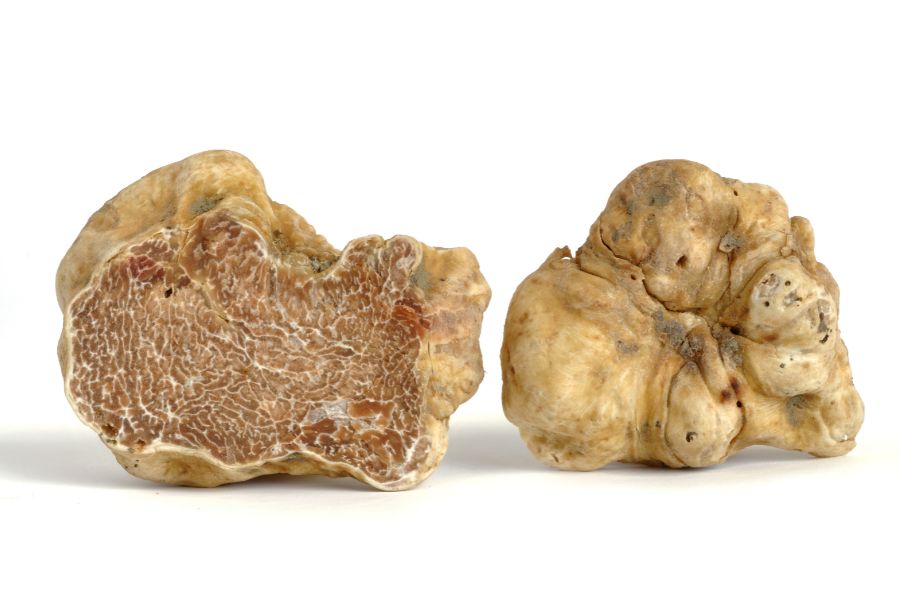You might associate truffles with oak forests in France or hazelnut groves in Italy, but some varieties grow closer to home. Truffles can be found in several parts of New York, hidden beneath the soil in wooded areas.
While Europe produces the famous white and black truffles, North America has its own species that are just as intriguing. They’re not always easy to spot, but they’re definitely out here in New York.
Finding them takes a different kind of attention than mushroom hunting above ground. Not every patch of woods holds promise, but some hold more than others. A little local knowledge can go a long way toward narrowing down your search.
What We Cover In This Article:
- What Wild Truffles Look Like
- Truffle Lookalikes To Avoid
- Best Practices For Finding Truffles
- Where You Can Find Truffles Around The State
- Other Great Locations For Truffles
- When The Best Time Of The Year Is To Find Truffles
- The extensive local experience and understanding of our team
- Input from multiple local foragers and foraging groups
- The accessibility of the various locations
- Safety and potential hazards when collecting
- Private and public locations
- A desire to include locations for both experienced foragers and those who are just starting out
Using these weights we think we’ve put together the best list out there for just about any forager to be successful!
A Quick Reminder
Before we get into the specifics about where and how to find these plants and mushrooms, we want to be clear that before ingesting any wild plant or mushroom, it should be identified with 100% certainty as edible by someone qualified and experienced in mushroom and plant identification, such as a professional mycologist or an expert forager. Misidentification can lead to serious illness or death.
All plants and mushrooms have the potential to cause severe adverse reactions in certain individuals, even death. If you are consuming wild foragables, it is crucial to cook them thoroughly and properly and only eat a small portion to test for personal tolerance. Some people may have allergies or sensitivities to specific mushrooms and plants, even if they are considered safe for others.
The information provided in this article is for general informational and educational purposes only. Foraging involves inherent risks.
What Wild Truffles Look Like
The U.S. is home to several native truffle species that grow wild in forests across the country. Each one has its own unique scent, appearance, and preferred habitat. Here are the types of truffles you can find:
Oregon Black Truffles (Leucangium carthusianum)
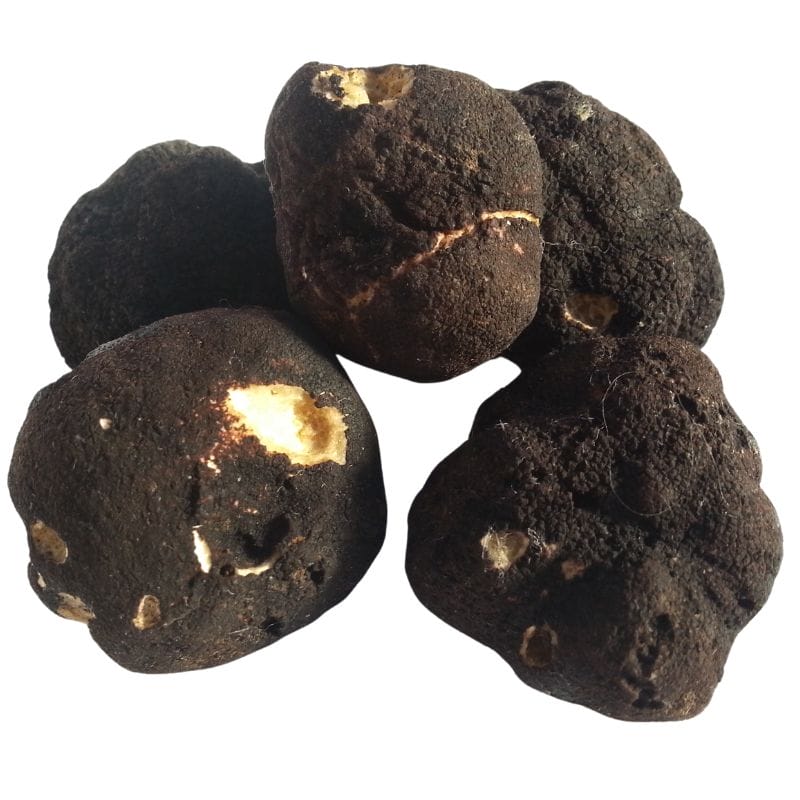
Leucangium carthusianum, also called the Oregon black truffle, grows in the Pacific Northwest and usually shows up around Douglas-fir trees. It’s a native species and one of the more well-known edible truffles from the region.
On the outside, it looks like a small lump of coal—dark black, kind of lumpy or warty, and sometimes slightly smoother in spots. They’re usually about the size of a golf ball, but they can be smaller or larger depending on the season.
Inside, the truffle is firm with a marbled pattern of gray and white veins running through it. When it’s fresh, it smells fruity, almost like pineapple, but the scent gets stronger and muskier as it ripens.
If you’re out looking for them, check in moist, shady forests with soft, loamy soil, especially where there’s a lot of moss or ferns. They grow just below the surface, so people often use trained dogs to help sniff out the ripe ones.
Compared to the Oregon white truffle, which is lighter in color and has a sharper, garlicky aroma, the black truffle has a deeper, more earthy smell. It’s also bigger and firmer than the southern U.S. truffles like Tuber lyonii, which tend to be smaller, paler, and grow around hardwoods like oaks and hickories.
Oregon Winter White Truffles (Tuber oregonense and Tuber gibbosum)
Oregon has two native white truffles that are starting to get more attention: the Oregon Winter White Truffle (Tuber oregonense) and the Oregon Spring White Truffle (Tuber gibbosum). They grow underground in forests and are prized for their strong, savory aroma.
From the outside, these truffles are small, roundish, and kind of bumpy, usually pale beige to light brown. Cut one open, and you’ll see a white interior that darkens with age, showing off a web of white veins when it’s fully mature.
The Winter White Truffle pops up from late fall into February, while the Spring White starts showing up around January and can last into June. They’re pretty similar, but the Winter variety is known for having a more powerful scent and flavor.
To find them, you’ll want to look in forests with younger Douglas-fir trees on the west side of the Cascades. Truffle hunters often check for loose soil or spots where animals have been scratching, which can be a sign there’s something below.
When fully ripe, both types give off a bold smell that’s often compared to garlic, cheese, or earthy spices. They’re usually served raw, shaved over dishes to add that truffle kick without losing any of the aroma.
Appalachian Truffle (Tuber canaliculatum)
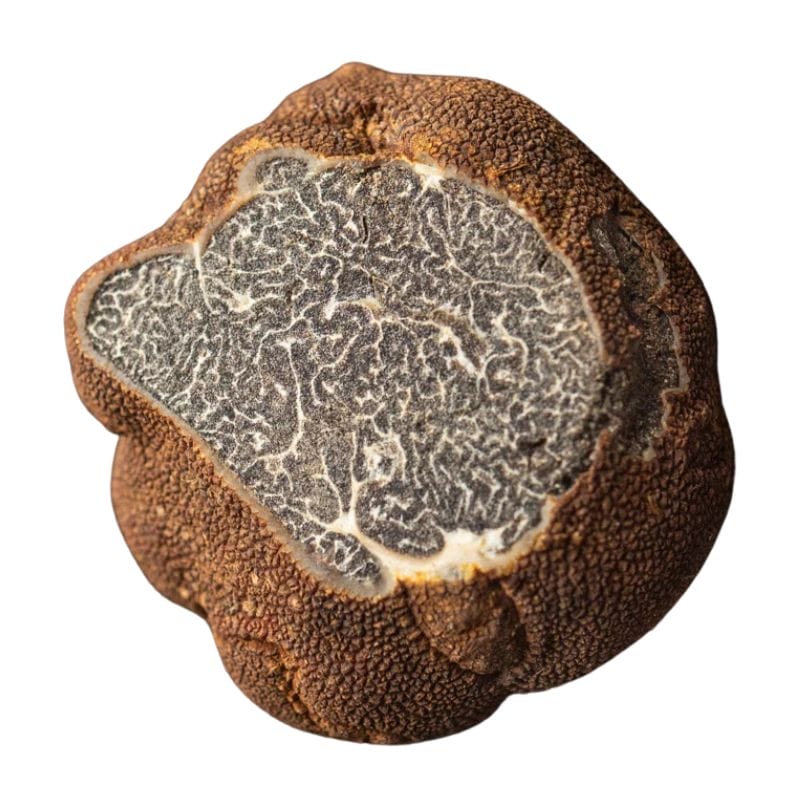
The Appalachian truffle, also known as Tuber canaliculatum, is a native North American truffle that’s slowly getting noticed. It’s about the size of a walnut and has a reddish-brown, bumpy outer surface that looks kind of like a rough, warty potato.
When you cut it open, the inside is firm and dark brown with thin white veins running through it like a marbled pattern. If it’s fully ripe, the smell is strong and earthy—some say it has a kind of nutty, funky aroma that stands out.
You can find these truffles in mixed hardwood forests, especially around oaks and pines, from late summer through fall. They grow underground, so look for spots where the soil is loose and animals like squirrels have been digging—sometimes that’s a good clue.
If you’re foraging, gently raking the top layer of soil near tree roots can help, but a trained dog or even a good nose makes it way easier. Once you know what to look for, the reddish color and bumpy skin are good signs you’ve found the right thing.
Compared to truffles like Tuber oregonense or Leucangium carthusianum, Tuber canaliculatum is more subtle in every way. Its smaller size and lighter scent mean you have to pay closer attention when foraging.
It’s also not as popular in the culinary world because it doesn’t pack the same punch in terms of flavor or aroma. Still, finding one can be rewarding, especially if you’re exploring different types of fungi in the area.
Desert Truffle (Terfezia and Tirmania spp.)
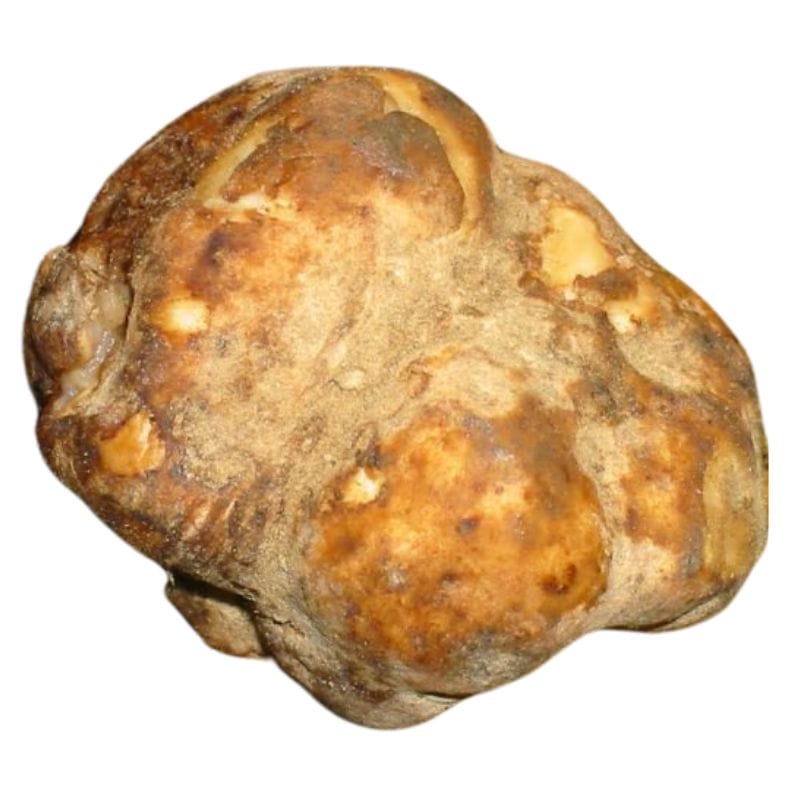
Terfezia and Tirmania are two types of truffles that are sometimes called desert truffles. These are a bit different from the truffles we usually think of, with their bold flavors and rich aromas.
These ones are a little more understated, but they’re fascinating in their own right. What makes them stand out is their ability to thrive in dry, harsh environments where you wouldn’t expect something so delicate to grow.
Unlike the earthy, intense aroma of black or white truffles, Terfezia and Tirmania truffles have a milder scent and flavor. They’re often described as nutty, with a hint of sweetness, but they lack the strong garlicky or musky notes you might associate with other truffles.
Their texture is also different—more firm and less oily than what you’d find with species like Tuber oregonense. They might not have the same culinary punch, but they’re still prized in traditional dishes, where their subtle flavors shine in simpler recipes.
When it comes to appearance, they’re easy to spot once you know what you’re looking for. They’re round to slightly irregular in shape, and their color can range from light beige to a reddish-brown, depending on the species.
The surface is usually smooth or slightly textured, without the rough, knobby look of a black truffle. Cut one open, and you’ll see a pale interior that’s often uniform in color, lacking the intricate veining you’d see in something like Leucangium carthusianum.
Pecan Truffle (Tuber lyonii)
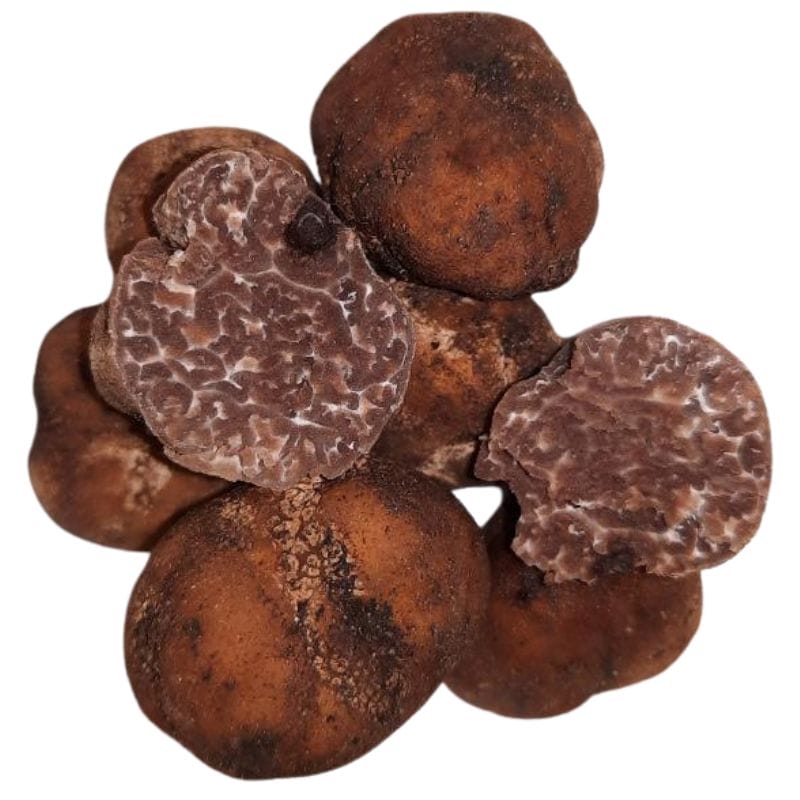
Tuber lyonii, also known as the pecan truffle, is a native North American truffle that grows underground near the roots of pecan trees. You’ll mostly find it in the southeastern U.S., especially in states like Texas, Georgia, and Mississippi.
On the outside, pecan truffles are round to lumpy and have a smooth, light brown skin that darkens as they age. They’re usually about the size of a marble or golf ball, and sometimes they even poke up slightly through the soil surface.
If you slice one open, the inside has a pretty marbled look—light tan streaks mixed with darker brown, almost like wood grain. The smell is earthy, nutty, and kind of warm, especially when they’re fully mature.
When you’re out looking for them, check under mature pecan trees or other hardwoods like oaks and hickories. Trained dogs can help sniff them out, but people sometimes spot them by looking for little cracks in the soil or raised areas near the tree’s base.
Compared to other U.S. truffles like the Oregon white truffle or the Appalachian black truffle, pecan truffles have a milder flavor and are more common in orchards. They’re a solid option in the kitchen—freshly sliced over pasta or mixed into butter—and they don’t come with the high price tag of their European cousins.
Truffle Lookalikes To Avoid
When you’re out hunting you also need to know about a few different fungi species that look very similar to the delicious truffles we’re after but are either inedible or not worth eating. Keep an eye out for:
Pine Truffles (Geopora cooperi)

Geopora cooperi is a fungus that can easily confuse someone new to truffle hunting. It’s sometimes called the pine truffle because it grows underground like a true truffle and often pops up near certain trees.
At first glance, it might seem like you’ve hit the jackpot, but this one is a false truffle, not something you’d want to eat or sell.
The easiest way to tell Geopora cooperi apart from real truffles is by looking closely at its structure. While true truffles have a smooth or slightly knobby exterior and a marbled interior, Geopora cooperi has a rougher, more irregular outer surface.
When it matures, it sometimes splits open, revealing a cup-like shape, which true truffles never do. Inside, it’s less dense and doesn’t have the intricate veining that makes real truffles so unique.
Another big difference is the smell. True truffles have a strong, rich aroma that’s earthy, sweet, or garlicky, depending on the species. Geopora cooperi, on the other hand, has a much weaker scent, and it’s not as pleasant or distinctive.
If you’re relying on aroma to identify your find, this one will give itself away pretty quickly. So, while it might look similar at first, a closer inspection will show it’s not the culinary treasure you’re hoping for.
Stinking Slime Truffle (Melanogaster ambiguus)
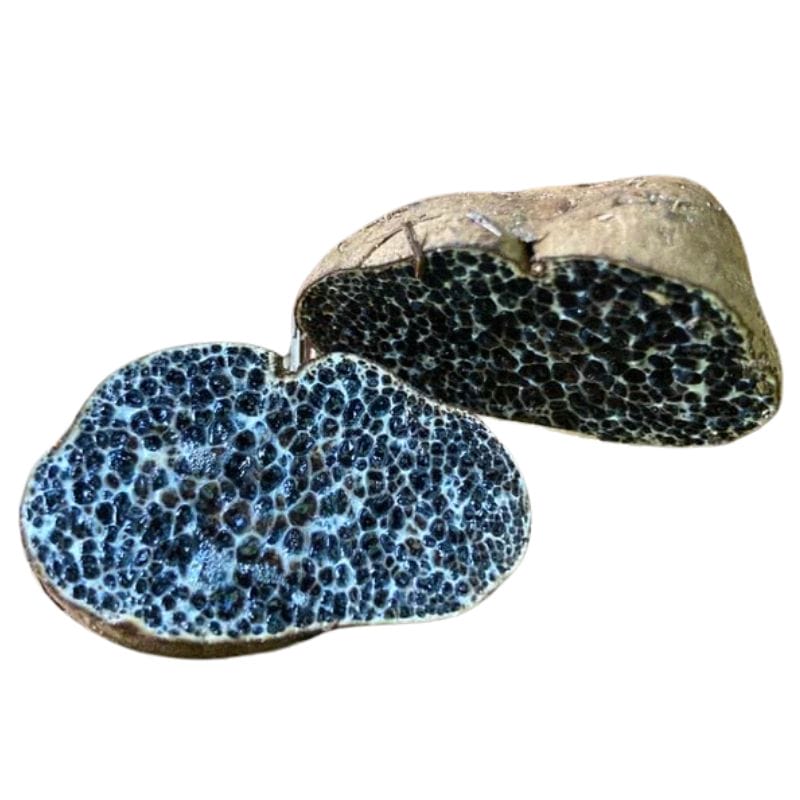
Melanogaster Ambiguus, because of their reddish-brown to dark brown exterior, might look like true truffles at first glance, but they’re quite different when you know what to look for.
The key difference is on the inside. When you cut open Melanogaster ambiguus, the interior is filled with flattened cells that have a shiny black gelatinous feel to them. Real truffles, on the other hand, have those beautiful marbled veins running through their flesh, almost like a web.
Another giveaway is the smell. While real truffles have a rich, earthy aroma that’s mouthwatering, Melanogaster ambiguus tends to have a much stronger, almost unpleasant odor—it’s not something you’d want to sprinkle on your pasta.
Earthballs (Scleroderma)
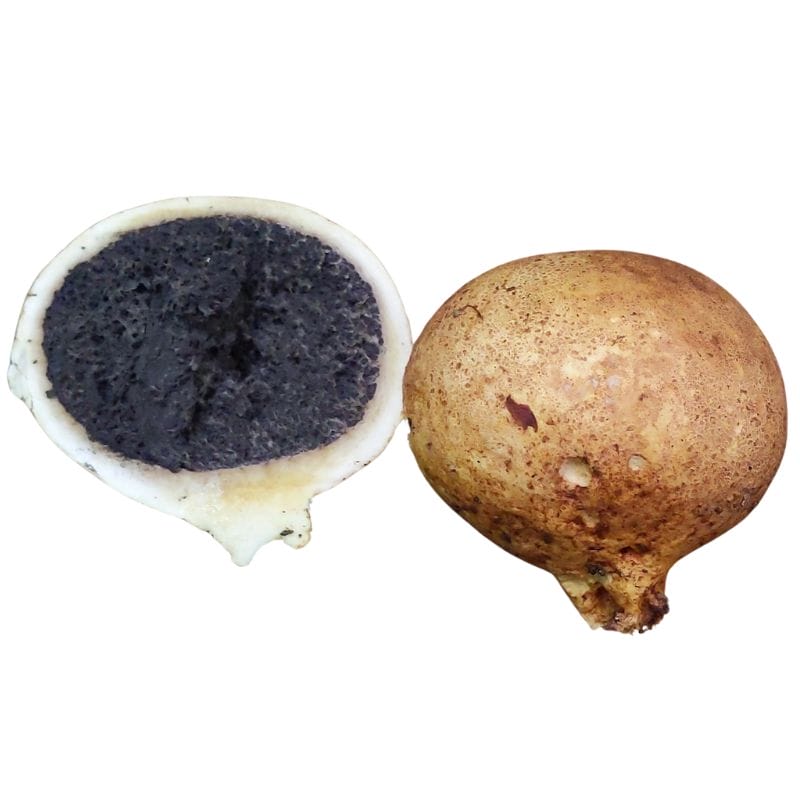
Scleroderma, commonly called earthballs, can easily fool someone who’s just starting out because they grow underground and have a round shape similar to truffles. But don’t be tricked—Scleroderma is not a true truffle, and it’s actually toxic, so it’s important to know how to tell the difference.
The first thing you’ll notice is the outer skin, which is thicker and tougher than that of most truffles. It can range in color from yellowish to dark brown, often with a rough or cracked texture.
If you cut it open, the difference becomes even clearer. While true truffles have a marbled interior with delicate white veins, Scleroderma starts out with a whitish inside that quickly darkens as it matures, turning black or purple with no marbling. It’s dense and solid, almost like charcoal in the later stages.
Another big giveaway is the smell. True truffles have a rich, earthy aroma that makes them so prized, while Scleroderma has little to no pleasant scent—some even describe it as musty or unpleasant.
Deer Truffles (Elaphomyces)
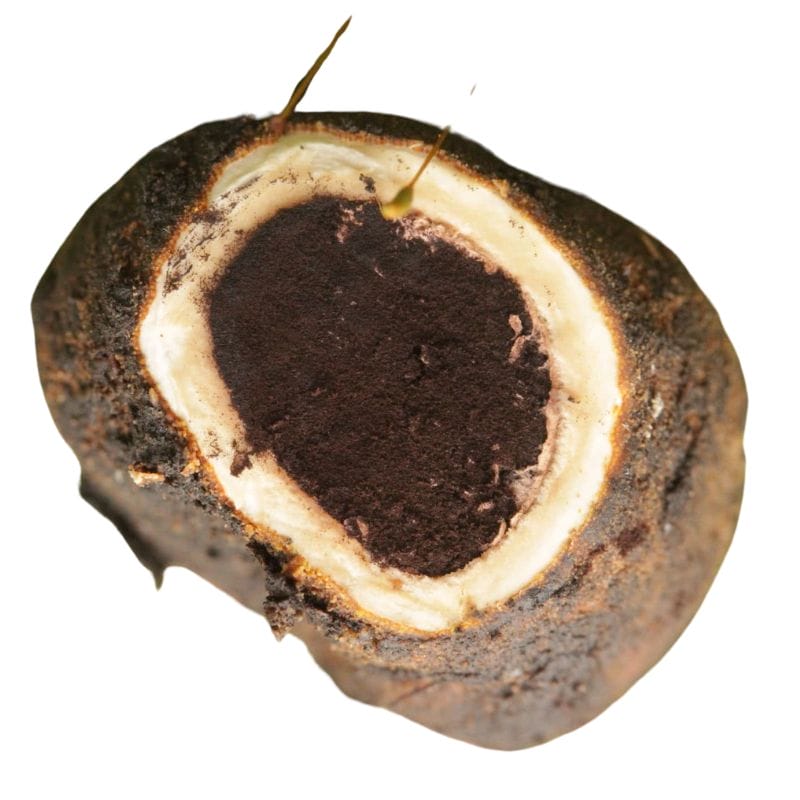
Elaphomyces, also known as deer truffles, look like true truffles at first glance, but they’re a whole different story. They’re called deer truffles because wildlife, especially deer and rodents, love to eat them. For us humans, though, they’re not edible—and definitely not what you want to mistake for a prized truffle.
Here’s how you can tell Elaphomyces apart from the real thing. First, they have a tough, warty outer surface that can range from pale tan to black, depending on the species and their age.
When you cut them open, the inside is solid and sometimes speckled or marbled, but not in the delicate, vein-like pattern you’d see in true truffles.
Their smell is also a big giveaway. Instead of the rich, earthy aroma of an edible truffle, Elaphomyces either has little scent or an odor that’s earthy but not particularly appealing.
Another thing to know is that Elaphomyces often grows deeper in the soil than true truffles, and they tend to have a harder, woodier texture.
Best Practices For Finding Truffles
Truffle hunting can be a rewarding adventure if you know the right tips and tricks. Here’s what you should keep in mind to improve your chances of finding these underground treasures:
Wait 10 to 14 Days After Heavy Rain
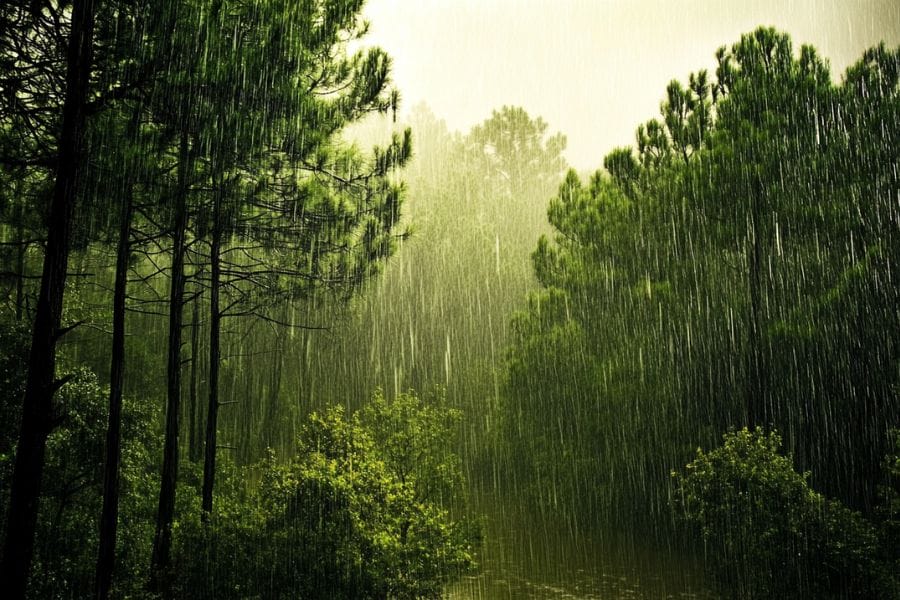
After a heavy rain, it’s best to wait about 10 to 14 days before heading out. This gives the truffles time to mature and release their signature aroma, making it easier for you (and your dog) to sniff them out. Rain helps truffles grow, but they don’t start giving off their scent right away.
As the soil warms up, the truffles get more aromatic, and the ground becomes looser, which makes digging easier without disturbing the environment too much. The timing is perfect to find truffles at their best—both in quality and in how easy they are to locate.
Find the Right Trees

Truffles don’t grow just anywhere—they have a special relationship with certain trees. You won’t find them under just any tree, so knowing which ones to look for can make all the difference. Some of the best trees to look out for are:
- Pines
- Douglas-firs
- Oaks
- Hazelnuts
- Cypresses
- Willows
For example, if you’re looking for Oregon white truffles, keep an eye out for Douglas-fir trees. California black truffles, on the other hand, are often found near oaks and hazelnuts. The soil around these trees also needs to be slightly alkaline, so it helps to know what kind of ground you’re walking on as well.
Watch for Wildlife Activity
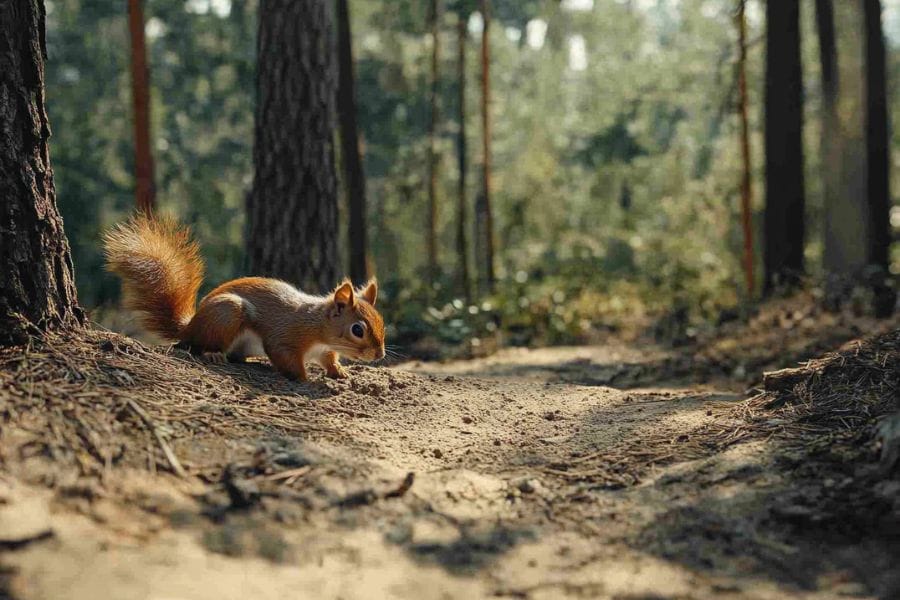
Animals like squirrels and chipmunks often help spread truffle spores, and sometimes their digging can lead you straight to truffles. While you won’t always find truffles in every pit animals dig (they also look for things like acorns or bulbs), fresh digs are a good clue. The more recent the pit, the better chance it has of leading to truffles.
Even though animals are a part of the truffle cycle, most hunters prefer using dogs to find the real treasure underground. Dogs have an incredible nose for truffles and can pinpoint their location much more reliably than any squirrel or chipmunk.
Get a Little Help from a Truffle-Hunting Dog
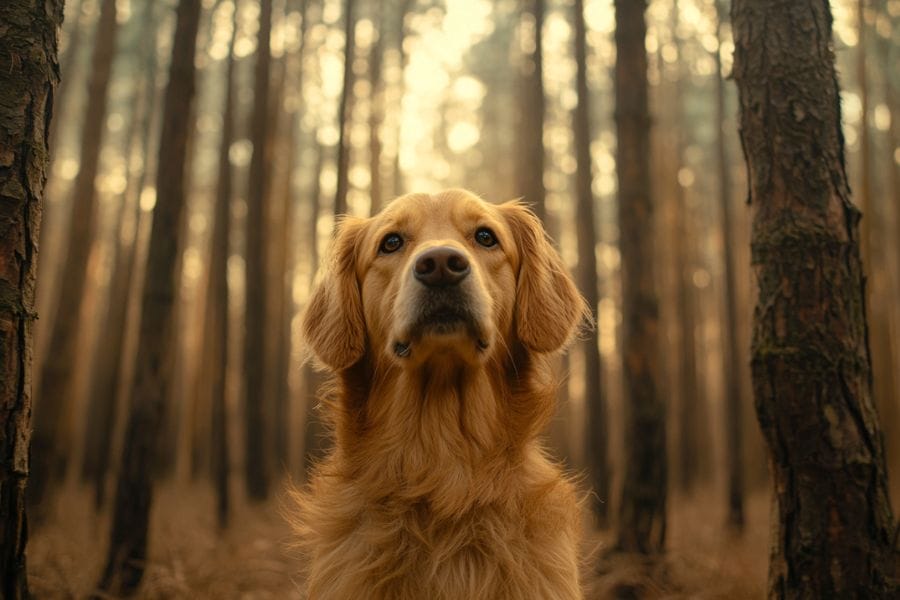
If you’re serious about truffle hunting, a trained dog can make your life a whole lot easier. Their sense of smell is extraordinary, and they’re trained to find mature truffles buried beneath the surface. Many truffle hunters swear by their dogs, and for good reason—they’re much more accurate than humans when it comes to sniffing out truffles.
If you don’t already have a trained dog, you can connect with local foraging groups or specialized trainers who offer truffle-hunting services. Some places even host events where you can see experienced handlers with their dogs in action. And if you’re feeling adventurous, you can train your own dog using truffle-scent kits and practice in a controlled space before hitting the woods.
Before you head out
Before embarking on any foraging activities, it is essential to understand and follow local laws and guidelines. Always confirm that you have permission to access any land and obtain permission from landowners if you are foraging on private property. Trespassing or foraging without permission is illegal and disrespectful.
For public lands, familiarize yourself with the foraging regulations, as some areas may restrict or prohibit the collection of mushrooms or other wild foods. These regulations and laws are frequently changing so always verify them before heading out to hunt. What we have listed below may be out of date and inaccurate as a result.
Where You Can Find Truffles Around The State
Now we’re going to go over five of the best locations for finding truffles. We’ll go a bit in-depth here and then provide a much longer list of other spots to try.
Slide Mountain Wilderness
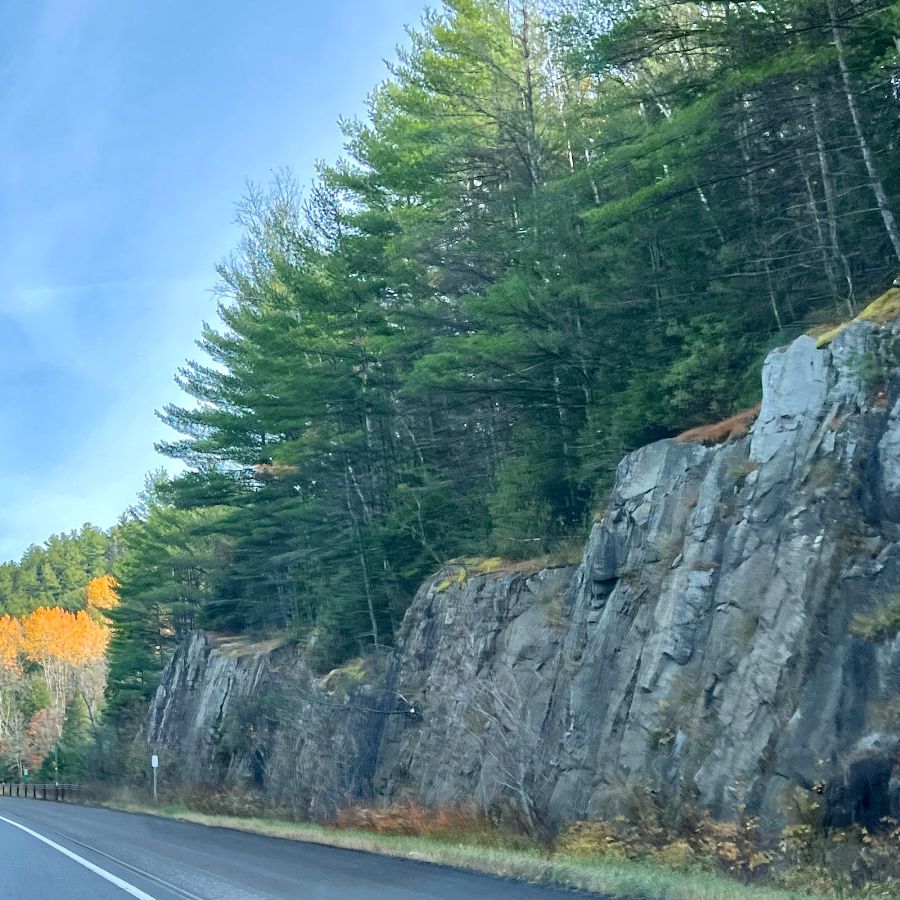
Slide Mountain Wilderness is located in the heart of the Catskill Mountains and is home to the highest peak in the Catskills. This rugged wilderness spans over 47,500 acres and features dense forests, babbling streams, and diverse wildlife. Visitors can explore miles of hiking trails that wind through the mountainous terrain.
The mountain’s elevation creates unique microclimates that support various plant species. Slide Mountain is known for its old-growth forests with massive trees providing shade to the forest floor.
The relatively undisturbed nature of this wilderness area has allowed fungal networks to establish themselves over many decades. For truffle hunters, the northeastern slopes offer promising hunting grounds. Look near the bases of mature beech trees where the soil is moist but not soggy.
Areas around the Giant Ledge trail have several oak and hickory trees that often form symbiotic relationships with truffles. Another good spot is the forest floor near Woodland Valley where the leaf litter creates a perfect envirnment for truffle development.
Moose River Plains Wild Forest
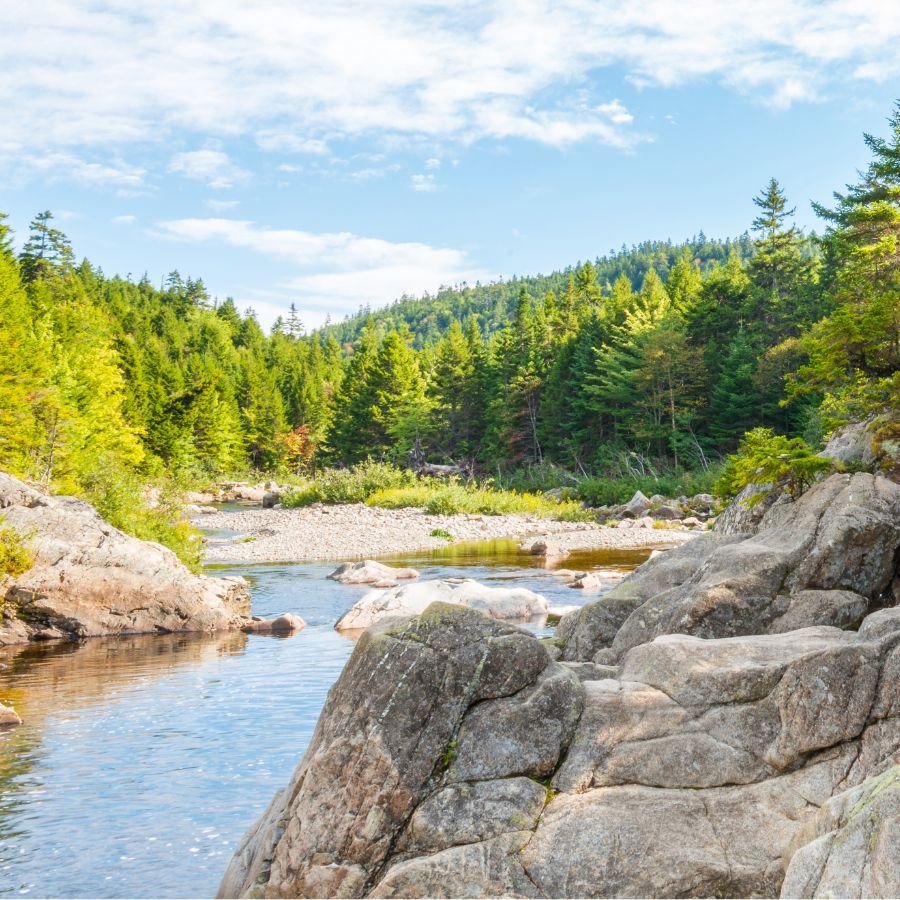
Moose River Plains Wild Forest offers a vast expanse of wilderness in the central Adirondacks region. Many visitors come to experience the serenity and beauty of this remote area. The Moose River itself carves through the landscape, creating varied soil conditions perfect for fungi.
This beautiful forest covers approximately 50,000 acres of rolling hills, wetlands, and mixed forests. It’s accessible via a scenic dirt road system that winds through the heart of the area.
Truffle enthusiasts should focus their search around the Cedar River Flow area, where the soil is rich and loamy. The mixed hardwood forests near Limekiln Lake have ideal conditions with their calcium-enriched soils, which truffles typically favor.
Try searching beneath the driplines of older maple trees where water carrying nutrients from the leaves concentrates.
Hemlock-Canadice State Forest
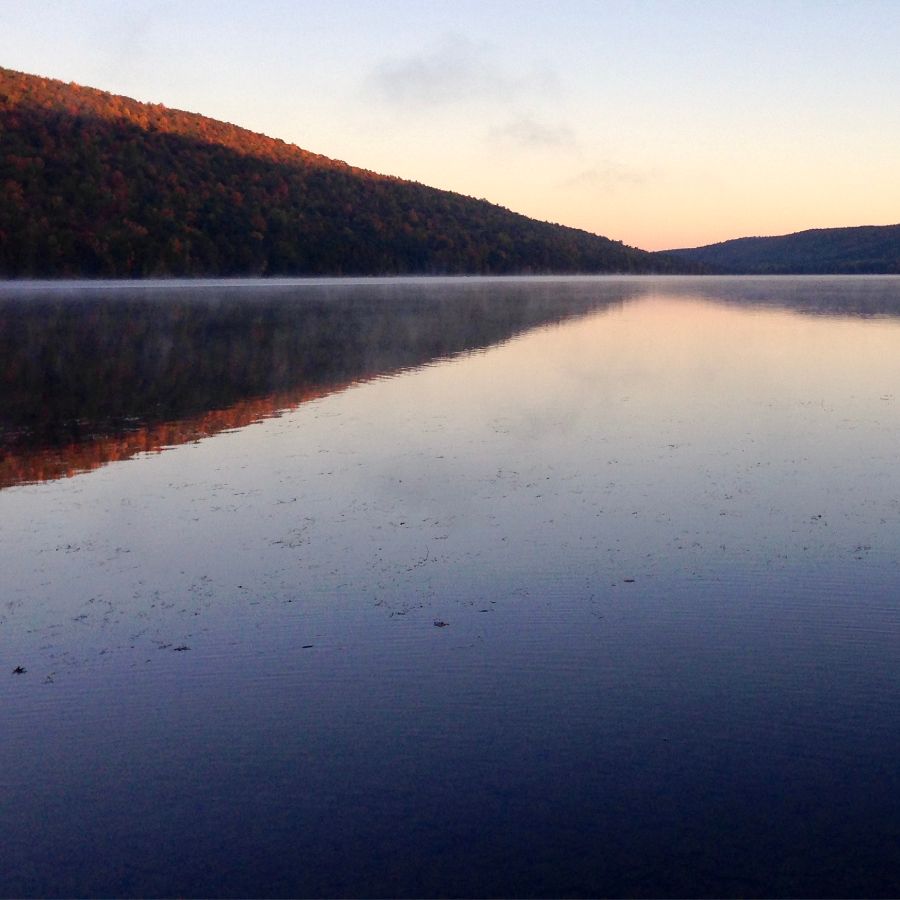
Hemlock-Canadice State Forest surrounds the only undeveloped Finger Lakes in New York State. This long-term protection has allowed natural processes to flourish uninterrupted. The unique microclimate created by the proximity to the lakes helps maintain consistent soil moisture levels.
This pristine forest area encompasses approximately 6,684 acres of woodland that protects the watersheds of both Hemlock and Canadice Lakes. It serves as an important wildlife habitat and offers exceptional recreational opportunities.
When hunting for truffles here, concentrate on the western slopes where the morning sun warms the soil gradually. The areas between Rob’s Trail and the lake shore contain many mature hardwoods that potentially host truffles.
Look specifically around older beech and oak trees where the ground isn’t too densely covered with undergrowth. Another productive area is the southern portion of the forest, where limestone outcroppings create alkaline soil conditions that some truffle species prefer.
Tioughnioga Wildlife Management Area
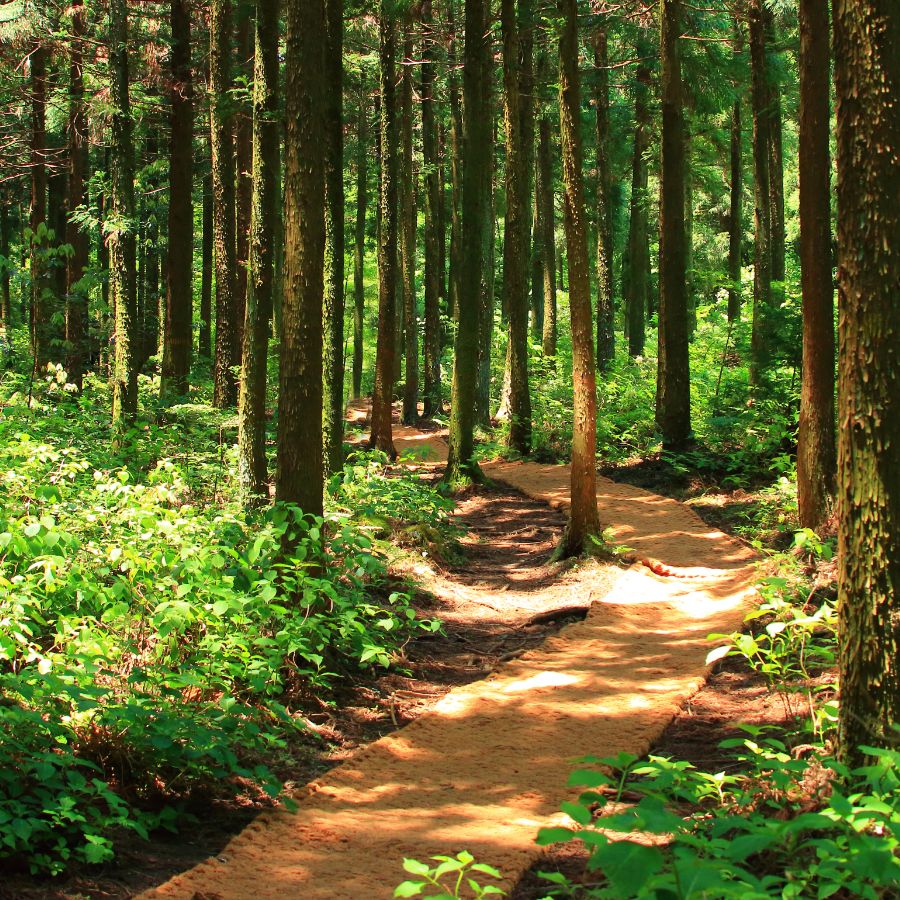
Tioughnioga Wildlife Management Area is a diverse ecological treasure located in central New York. Older sections of forest have remained relatively undisturbed for decades. The transition zones between forests and meadows can be particularly productive, as these edge habitats often harbor diverse fungal communities.
This area spans over 3,600 acres with varied terrain including wetlands, grasslands, and forested uplands. The management area is named after the Tioughnioga River, which flows nearby.
For successful truffle hunting, explore the northern hardwood stands where sugar maple and American beech trees dominate. The slight ridges in the southwestern section of the management area provide excellent drainage conditions that truffles often require.
Check around the root zones of mature trees, especially where the ground has a rich layer of organic matter but isn’t compacted. Another promising location is near the seasonal streams where the soil retains moisture without becoming waterlogged during drier periods.
Hunter-West Kill Wilderness
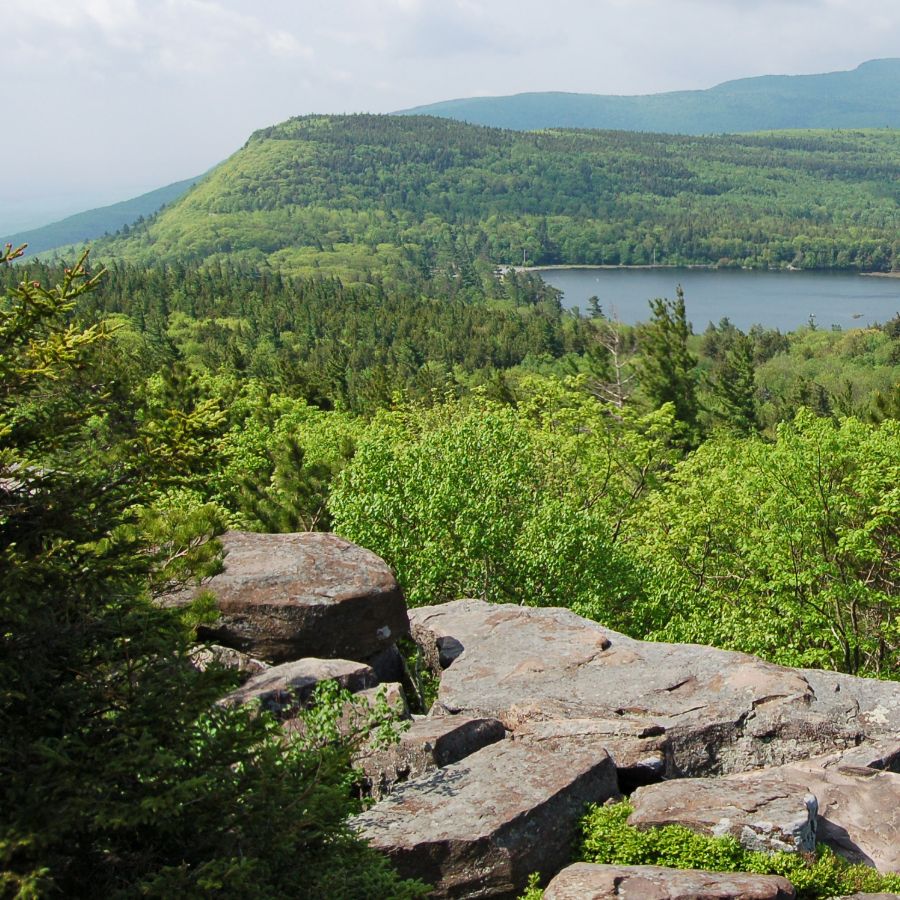
Hunter-West Kill Wilderness is a breathtaking montane landscape in the northern Catskill Mountains. Old-growth forest pockets can be found throughout the wilderness, some containing trees that are several hundred years old.
The Spruceton Valley section has slightly acidic soils that some varieties of truffles prefer, particularly around stands of mixed conifers and deciduous trees.
Truffle hunters should investigate the eastern-facing slopes near Hunter Mountain, where the soil composition is ideal for fungal growth. The Buck Ridge area offers promising hunting grounds with its mix of hardwoods and conifers, creating diverse soil chemistry.
Investigate around the bases of older birch trees, which sometimes form mycorrhizal relationships with certain truffle species. Look in areas where the forest canopy is not too dense, allowing some sunlight to reach the forest floor and warm the soil during the day.
Other Great Locations For Truffles
| Adirondack Region | Foraging Permissions |
|---|---|
| Black River Wild Forest | Personal foraging of truffles is allowed; avoid disturbing the forest floor. |
| Ferris Lake Wild Forest | Truffle collection permitted; adhere to sustainable harvesting practices. |
| Independence River Wild Forest | Foraging allowed; maintain minimal impact on natural habitats. |
| Moose River Plains Wild Forest | Truffle foraging permitted; stay on designated trails when possible. |
| Saranac Lakes Wild Forest | Collection allowed; be mindful of sensitive ecological areas. |
| Shaker Mountain Wild Forest | Truffle foraging permitted; limit collection to personal use quantities. |
| Silver Lake Wilderness | Foraging allowed; ensure no damage to surrounding vegetation. |
| Watson’s East Triangle Wild Forest | Truffle collection permitted; avoid overharvesting in concentrated areas. |
| Catskill Region | Foraging Permissions |
|---|---|
| Big Indian Wilderness | Truffle foraging allowed; practice leave-no-trace principles. |
| Balsam Lake Mountain Wild Forest | Collection permitted; refrain from disturbing wildlife habitats. |
| Hunter-West Kill Wilderness | Foraging allowed; collect only mature truffles to support regeneration. |
| Kaaterskill Wild Forest | Truffle collection permitted; stay within marked boundaries. |
| Slide Mountain Wilderness | Foraging allowed; avoid trampling understory vegetation. |
| Sundown Wild Forest | Truffle foraging permitted; use tools that minimize soil disruption. |
| West Kill Wilderness | Collection allowed; respect seasonal access restrictions. |
| Central New York | Foraging Permissions |
|---|---|
| Beaver Meadow State Forest | Truffle foraging allowed; limit collection to personal consumption. |
| Brookfield Railroad State Forest | Collection permitted; avoid areas under active restoration. |
| Charles E. Baker State Forest | Foraging allowed; be cautious of private property boundaries. |
| Lincklaen State Forest | Truffle collection permitted; adhere to posted guidelines. |
| Rooted Truffles Orchard | Private orchard offering guided truffle hunts with trained dogs. |
| Taylor Valley State Forest | Foraging allowed; minimize soil disturbance during collection. |
| Tioughnioga Wildlife Management Area | Truffle foraging permitted; follow all posted regulations. |
| Finger Lakes Region | Foraging Permissions |
|---|---|
| Arnot Forest | Truffle collection allowed; stay on established trails. |
| Bear Swamp State Forest | Foraging permitted; avoid wetland areas to protect sensitive species. |
| Hemlock-Canadice State Forest | Truffle foraging allowed; respect any seasonal closures. |
| High Tor Wildlife Management Area | Collection permitted; maintain a safe distance from wildlife. |
| Italy Hill State Forest | Foraging allowed; limit impact on the forest floor. |
| Sugar Hill State Forest | Truffle collection permitted; use sustainable harvesting methods. |
| Urbana State Forest | Foraging allowed; adhere to all local regulations. |
| Hudson Valley | Foraging Permissions |
|---|---|
| Black Rock Forest | Truffle foraging allowed; coordinate with forest management for access. |
| Clarence Fahnestock State Park | Collection permitted; stay within designated foraging zones. |
| Hudson Highlands State Park | Foraging allowed; avoid areas with high visitor traffic. |
| Minnewaska State Park Preserve | Truffle collection permitted; adhere to park-specific guidelines. |
| Shaupeneak Ridge Cooperative Recreation Area | Foraging allowed; respect cooperative land use agreements. |
| Sterling Forest State Park | Truffle foraging permitted; stay on marked trails to minimize impact. |
| Taconic Hereford Multiple Use Area | Collection allowed; follow all posted rules and regulations. |
| Western New York | Foraging Permissions |
|---|---|
| Allen Lake State Forest | Truffle foraging allowed; avoid collecting near water bodies. |
| Carlton Hill Multiple Use Area | Collection permitted; be aware of hunting seasons and regulations. |
| Cattaraugus State Forest | Foraging allowed; respect any active land management activities. |
| Genesee Valley Wildlife Management Area | Truffle collection permitted; follow all wildlife area guidelines. |
| Hanging Bog Wildlife Management Area | Foraging allowed; avoid sensitive bog ecosystems. |
| Keeney Swamp State Forest | Truffle foraging permitted; minimize disturbance to the forest floor. |
| Rattlesnake Hill Wildlife Management Area | Collection allowed; adhere to all area-specific rules. |
When The Best Time Of The Year Is To Find Truffles
Fall and winter are the prime seasons for finding truffles in New York. October through February offers the best hunting conditions when the ground is cool and moist. Most New York truffles reach their peak ripeness during these colder months.
Different truffle types have their own schedules. Black truffles usually appear from December to March in our state. Summer truffles can sometimes be found from May to August when conditions are right.
Weather plays a big role in truffle growth. A wet fall often means more truffles during winter hunting season.
One Final Disclaimer
The information provided in this article is for general informational and educational purposes only. Foraging for wild plants and mushrooms involves inherent risks. Some wild plants and mushrooms are toxic and can be easily mistaken for edible varieties.
Before ingesting anything, it should be identified with 100% certainty as edible by someone qualified and experienced in mushroom and plant identification, such as a professional mycologist or an expert forager. Misidentification can lead to serious illness or death.
All mushrooms and plants have the potential to cause severe adverse reactions in certain individuals, even death. If you are consuming foraged items, it is crucial to cook them thoroughly and properly and only eat a small portion to test for personal tolerance. Some people may have allergies or sensitivities to specific mushrooms and plants, even if they are considered safe for others.
Foraged items should always be fully cooked with proper instructions to ensure they are safe to eat. Many wild mushrooms and plants contain toxins and compounds that can be harmful if ingested.

